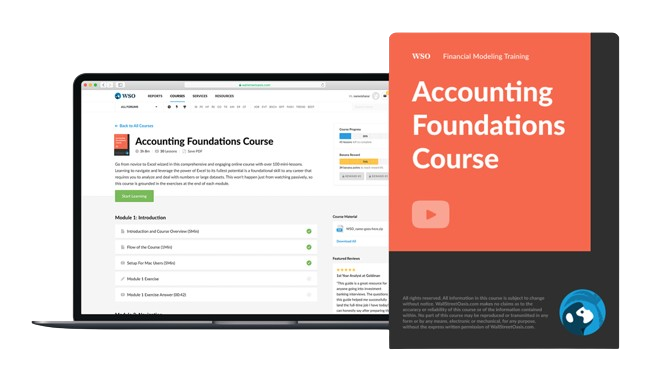Non-Recourse vs. Recourse Loans
The former shields borrowers from personal liability beyond collateral, whereas the latter holds borrowers responsible for any outstanding debt
What Are Non-Recourse Vs. Recourse Loans?
Non-recourse loans limit lenders’ ability to seize assets beyond the collateral securing the loan, providing borrowers protection from personal liability.
Recourse loans hold borrowers personally liable for any remaining debt after the collateral seizure, allowing lenders to pursue additional assets if the collateral value falls short.
A loan is “non-recourse,” which means that the default is secured by collateral; usually, such an asset is stable in value as property. Therefore, the lender can pursue the borrower in seeking compensation by immediately liquidating the collateral to compensate for the default.
However, the lender cannot pursue the borrower for more than the collateral. Therefore, if the default amount is higher than the collateral asset is worth, the lender must take on that difference as a loss.
This ensures the borrower is not liable for funds exceeding the collateral in the case of default. This means the borrower’s personal assets are not to be pursued by the lender.
Key Takeaways
- Non-recourse loans shield borrowers from personal liability beyond collateral, whereas recourse loans hold borrowers responsible for any outstanding debt.
- Non-recourse loans limit lenders to seizing only the collateral in case of default, while recourse loans allow them to pursue additional assets.
- Non-recourse loans are common in mortgages, credit cards, and auto loans, while recourse loans are prevalent in real estate and short-term funding.
- In default scenarios, non-recourse loans may result in losses for lenders beyond collateral value, while recourse loans enable lenders to recover from borrower's other assets.
- Borrowers, depending on risk tolerance, may opt for non-recourse loans despite higher interest rates to safeguard personal assets in unforeseen circumstances.
Understanding Non-Recourse And Recourse Loans
Non-recourse loans are available in the form of credit card debt, auto loans, and most home mortgages. Any government-backed debt is required to be a non-recourse structured loan.
On the other hand, a recourse loan is a type of secured debt, which means that the collateral secures the default amount and, if necessary, the borrower’s assets. Therefore, the lender has the right to seize more than the collateral to compensate for the default amount.
Of course, if the unpaid loan amount is less than or equal to that of the collateral, the lender can simply liquidate the collateral to settle the transaction. However, recourse debt is structured so a lender has rights beyond the collateral if needed.
Most lenders prefer to give out recourse loans to protect them from the worst-case scenario, although seizing assets is a hassle. Therefore, common types of recourse loans, similar to non-recourse loans, include auto loans, credit card debt, and home mortgages.
Further, short-term debt provided for funding real estate also usually happens to be recourse debt.
A deficiency amount is an amount lacking that the lender requires to be paid back. This amount can be compensated by liquidating a necessary amount of the borrower's assets. Such as other property, stocks, cash in the bank, or other assets.
How do I determine if I have recourse or non-recourse debt?
Remember, it does not matter what your loan type is unless you are delinquent. However, it can still be useful for you to know the structure of your loan.
To determine if your mortgage is recourse or non-recourse, consult the list of states where non-recourse loans are permitted and review your loan documents. Additionally, consider contacting your lender for clarification.
If you believe you might default, work with your lender immediately to determine if there are any options to avoid default, such as forbearance or loan modification. This is especially important if you have a recourse loan.
Note
Seek guidance from legal and financial professionals, such as attorneys and accountants, throughout the process.
What Are Non-Recourse Loans?
Non-recourse loans limit lenders' ability to seize assets beyond the collateral securing the loan. These loans can be advantageous for borrowers since the lender primarily bears the risk and liability, though there are nuances to consider.
The property pledged as loan collateral is the sole asset the lender may seize in the event of a borrower's failure on a non-recourse loan.
The lender is responsible for managing the property in the event of a drop in value or significant underlying concerns, typically resulting in a loss for them.
Non-recourse loans are typically more challenging to obtain and may come with higher interest rates than recourse loans due to the increased risk for the lender. Because non-recourse loans carry greater risk for the lender, this is the case.
Note
Having an excellent credit score and sound financial standing is imperative when applying for a non-recourse loan.
What Are Recourse Loans?
With Recourse Loans, the borrower bears the lion's share of risk and exposure. In the event of a default, the lender has the right to confiscate the loaned property and pursue recovery of any outstanding debt from the borrower's other assets and bank accounts.
Interest rates on recourse loans are lower than those on non-recourse loans. In the event of default, the lender will typically first seize and sell the collateral specified in the loan agreement to recover losses.
The lender may pursue the borrower's other assets or file a lawsuit to have the borrower's earnings garnished if that is not valuable enough to cover the loan balance.
Examples of Recourse and Non-Recourse Loans
Both types of debt can be difficult to understand; therefore, let us run through a situation where a borrower defaults on a substantial loan amount. We can apply this example to a non-recourse and a recourse loan example.
Non-Recourse Loan Example
Assume you take out a loan to purchase a car in Alaska, where non-recourse debt can be issued. We can highlight the following factors associated with this transaction:
- Car purchase price: $50,000
- Down payment: $10000 (20% of purchase price)
- Loan amount: $40,000
- Interest rate: 4.5%
- Loan term: 60 months (5 years)
- Total interest: $4,743.25
Suppose an unexpected medical expense occurs right after you are issued this loan, making it difficult to make the monthly payments. You, unfortunately, defaulted immediately.
The lender quickly liquidates your collateral, which is the car you purchased. The lender liquidates the asset and finds that it only satisfies $35,000 of what is owed.
In a non-recourse loan, the lender's recovery is limited to the value of the collateralized asset. They cannot pursue the borrower for the remaining balance, including interest, beyond the asset's value.
Recourse Loan Example
Assume you are a homebuyer who takes out a loan to purchase a property. We can highlight the following factors associated with this transaction:
- Property purchase price: $1,000,000
- Property down payment: $200,000 (20% of loan purchase price)
- Loan amount: $800,000
- Interest rate: 4.5%
- Loan term: 30 years
- Total interest: $746,046.27
Suppose an unexpected medical expense occurs right after you are issued this loan, making it difficult to make the monthly payments. You, unfortunately, defaulted immediately.
The lender quickly moves to liquidate your collateral, the purchased property. Upon liquidation, the property only covers $700,000 of the outstanding debt.
Remember, the lender expects to receive the loan amount of $800,000 plus the interest accrued up to this point. Hence, the lender would not be fully satisfied at this point.
The lender would then seize assets to cover the deficiency amount, including the remaining unpaid principal and accrued interest. Unfortunately, the borrower must sell their assets to compensate the lender.
Recourse Loans vs. Non-Recourse Loans
Many factors associated with recourse and non-recourse debt cause such loan structures to create differences for borrowers and lenders. We will consider the perspective of the lender and the borrower when reviewing both types of debt structures.
The following table highlights the key factors associated with the two types of debt:
| Recourse Loan | Non-Recourse Loan |
|---|---|
| Lower interest rate | Higher interest rate |
| Recourse loans are more commonly structured, providing a wider range of loan options for borrowers | The lender has no claim on the borrower's personal assets on default and, thus, is limited to the collateral. |
| Most loans are structured as recourse; therefore, more loan options exist. | Loan options are restricted. Only certain states in the U.S. are allowed to issue Non-recourse debt. |
| Lenient approval requirements | Stringent approval requirements |
Remember that the elements in the table are the most common cases with each type of debt structuring. However, you should work with your lender to determine the offered terms.
As shown in the table above, recourse and non-recourse loans share many similarities but act differently in the case of default or deficiency.
Note
The differences in the loan structure only play out in the event of a default. Other than that, the differences in interest rates are among the only prominent factors that stand out to lenders and borrowers.
Choosing Recourse Vs. Non-Recourse Loans
Let us now discuss the perspectives of a lender and borrower for both loan structures to understand which type of debt suits which scenario better.
Lenders Perspective
Many lenders generally prefer recourse-structured debt, even if it offers a lower return on investment. This is because the lender can give out these loans to borrowers and need not worry about the default risk.
After all, in the event of default, they can seize a portion of the borrower's personal assets to cover losses. Contrary to the statement, non-recourse debt can be issued in many states in the U.S., although it may not be as common as recourse debt.
Therefore, lenders usually would gladly issue a recourse loan over a non-recourse loan in most cases. However, there are still cases where the risk of issuing non-recourse debt is worth it.
Note
If a borrower has excellent credit and a low risk of default, a lender may consider issuing non-recourse debt, albeit at a higher interest rate. Although at a comparatively higher interest rate.
As mentioned before, the interest rate for non-recourse debt is higher, as the lender is taking on the risk of being unable to pursue the borrower past the collateral value in the event of a default.
Therefore, lenders must conduct thorough analyses to assess the likelihood of a borrower repaying the debt. Lenders often conduct rigorous analyses to determine default probabilities.
Let us discuss the borrower's perspective next.
Borrowers perspective
A borrower can look at the two loan options and immediately understand that a recourse loan is cheaper over its lifetime due to a lower interest rate. Further, the requirements to meet the criteria of this loan are lenient.
From the borrower's viewpoint, the primary benefit of a non-recourse loan becomes apparent in the event of default, as the lender cannot seize the borrower's assets.
Hence, you might wonder why a reliable borrower who meets the stringent approval requirements and is confident in paying back the debt would even consider taking on a non-recourse loan, given the higher interest rate and lack of loan options.
Note
It's essential to acknowledge that individuals have varying risk tolerances and financial circumstances. Even if a borrower is confident in his ability to pay back the lender, he may still choose to take on a non-recourse loan at an added cost to protect himself from the worst in case of default.
Risk-averse borrowers may find the additional cost worthwhile, even if the likelihood of default appears minimal, as it provides added protection against the potential loss of personal assets.
Conclusion
There is no definitive answer as to which loan type is better. Individuals should make a judgment on their risk tolerance and the confidence they have in their ability to make payments.
Therefore, conducting a self-analysis is crucial for potential borrowers to determine the suitable loan option for their needs. Always remember that unexpected circumstances can impact anyone.
A non-recourse loan protects against unforeseen circumstances, albeit at a potentially higher cost.
Therefore, considering the risks and benefits of both loan types, individuals should assess their risk tolerance and financial objectives. Additionally, individuals can collaborate with their lenders during this evaluation process.
It is crucial to recognize that both loans offer capital to a borrower at risk. Therefore, you should explore other debt offerings from your lender to make an informed decision considering all available options.
Today, many debt structures exist. Ask your lender and be transparent about your confidence in making repayments on various terms. A lender can create a unique loan structure for you if needed.
Should an unfortunate situation arise, submit a complaint to the Consumer Financial Risk Bureau (CFRB).
Free Resources
To continue learning and advancing your career, check out these additional helpful WSO resources:










or Want to Sign up with your social account?